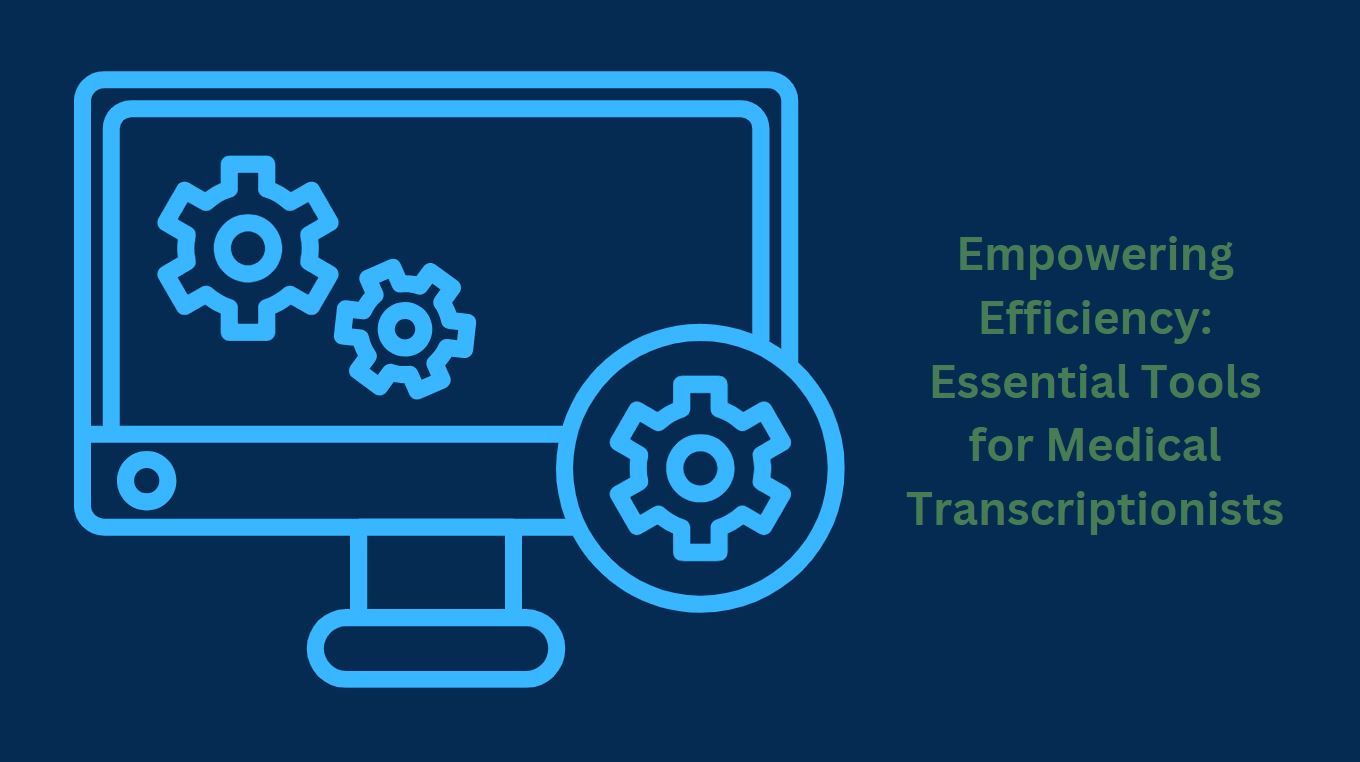Empowering Efficiency: Essential Tools for Medical Transcriptionists

Tools for Medical transcriptionists are essential to successfully convert audio recordings into written medical documents. It helps us to achieve accuracy and compliance with standards, which is also a path to increase efficiency. Here, I’ll identify the distinctive resources transcriptionists in healthcare require to get the task done faster and give high quality transcriptions.
1. Transcription Software
However, for medical transcriptionist, transcribing software is the most important instrument, and the interface used for typing, editing of sound recordings, and playback of audio recordings. Transcription software may vary in their choices based on the following.
- Express Scribe: A customizable transcribing software application with hotkeys for controlling playback, support for various audio formats, and with foot pedals enabled.
- Transcribe: Resolve the complicated procedures of transcribing for our users by providing them with an out-of-the-box solution in the form of an online transcription tool that will offer text formatting, speed adjustment and audio recordings uploading features for easy playback straight from the browser.
- InqScribe: An all-in-one transcription tool capable of time coding via keyboard shortcuts, speaker identification, and customization that allows transcribers to perform their tasks with ease.
2. Foot Pedal
Medical transcriptionists can control audio playback while typing with a foot pedal, a hands-free device. With three pedals for play, pause, rewind, and fast forward, foot pedals allow for smooth control of audio playing without interfering with typing.
3. Reference Materials
To reach for the accurate and all-around transcribing of medical terms, abbreviations, and protocols, the medical transcriptionists make reference to various reference materials. Important sources of information consist of-
- Medical dictionaries: Extensive dictionaries that include definitions, spellings, and medical terminology.
- Drug reference guides: Reference materials with details on prescription drugs, amounts, and interactions.
- Style guides: Sector-specific guidelines that specify transcribing standards, punctuation requirements, and formatting patterns.
4. Text Expanders
With text expanders, medical transcriptionists can increase efficiency by setting up shortcuts for often used words, phrases, or medical keywords. The text expander reduces recurring typing and saves time by automatically expanding the shortcut into the full text when you type. Typical text expander tools consist of-
- TextExpander: An adjustable tool for growing the string of text which can be implemented in generation & arrange snippets, sync connections data across devices, and invocation and integration with other apps.
- PhraseExpress: A program for text expansion which provides an opportunity to simply apply text macros, templates, and text expander (autotexts) in the document.
5. Speech Recognition Software
Medical transcriptionists can benefit from speech recognition software by having less manual typing required when speaking words into text. Speech recognition software can speed up transcribing and increase productivity, but it cannot replace human transcriptionists. Software for speech recognition examples include-
- Dragon NaturallySpeaking: It is a renowned speech recognition software that translates speech to text accurately. It enables users to transcribe and dictate audio files.
6. Electronic Health Record (EHR) Systems
EHR systems like Epic and Cerner are used to integrate Medical transcription and patient records. It is used to enable transcriptionists to enter transcribed data straight into patient charts. EHR systems improve data quality, workflow efficiency, and healthcare professionals’ access to medical records.
7. Text Editing and Proofreading Tools
Transcriptionists are assisted in editing and proofreading transcribed materials for grammar, punctuation, and readability by programs such as Grammarly and Hemingway Editor. They guarantee flawless and error-free medical transcripts, enhancing the general caliber and lucidity of medical records.
8. Secure File Sharing Platforms
Transcriptionists can safely share and receive audio recordings and transcribed documents via secure file sharing services like Dropbox and Google Drive. They make medical transcription procedures more collaborative, data-sharing, and confidentiality compliant.
Conclusion
Medical transcription professionals can successfully accomplish the tasks of transcribing in the medical domain by means of the aforementioned tools for medical transcriptionists, which inherently help them attain greater effectiveness, accuracy, and productivity. This set of these software and tools, running from foot pedals to transcription software, reference books and text expanders will help the members of this team through the transcribing process in the most expedient way possible with precise, quality documents that are inline with the requirements of healthcare.
Image credit- Canva
Discover more from Newskart
Subscribe to get the latest posts sent to your email.


Comments are closed.